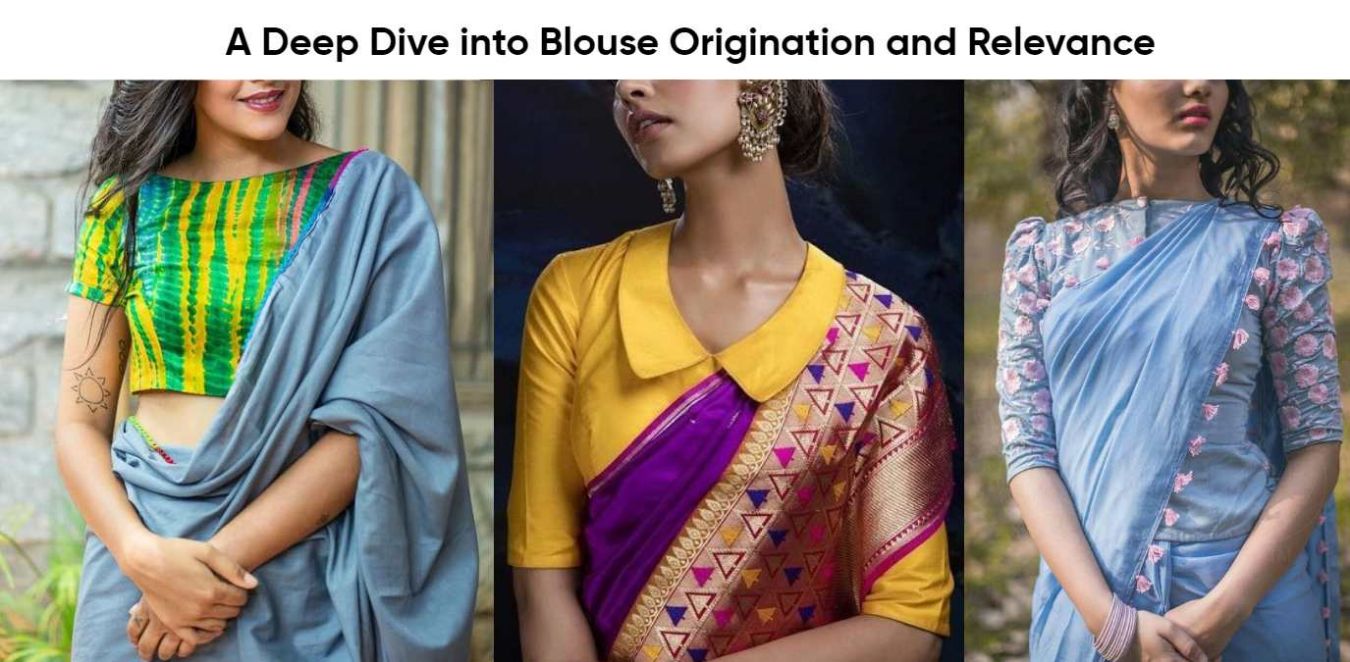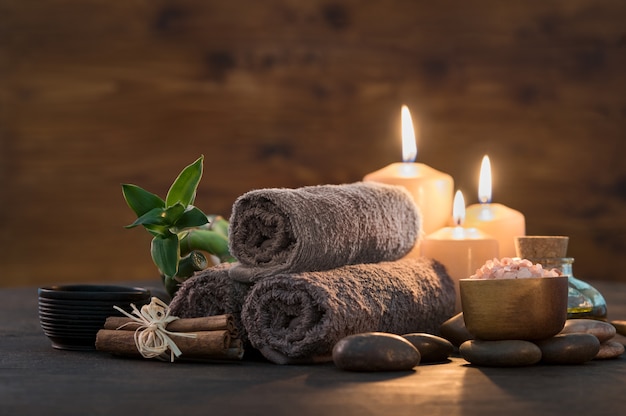A Deep Dive into Blouse Origination and Relevance
India has a rich diversity of unstitched and stitched apparel. It mainly comes from the regional and ethnic variations in the country. A distinct attire that women popularly wear here is the saree. They wear this garment with an underskirt and a fitted short blouse. Today, you can find a good variety in this garment. So, it makes sense to appreciate blouse origination and relevance. As per historians, the Indian saree blouse came from choli, the traditional upper garment that women wear with ghagra or saree. Let's surprise you with the amazing history of blouses.
Where Did the Word Blouse Come From?
The word blouse comes in the English language from French. It has relatively humble beginnings. Very early, it was the usual attire of peasants, artists, children, and women. Originally, the term referred to a blue blouse that French workers wore. But the term started applying the smocks and tunics that were worn by English farm laborers. It started to become associated with a young lady only in 1970.
You will find it surprising to note that till 1890, blouses were considered unfashionable. But it became an integral element of a working woman's outfit post-1890s. Most office women's attire consisted of a simple blouse and plain skirt. Between 1900-1910, blouses started becoming highly chic as they started to appear with lace and embroidery. At this time, a blouse with tucks and pleating became the symbol of a fashionable woman. Over the years, the typical blouse has undergone a dramatic transformation. So, what is considered a blouse now? Put simply, any loose-fitting upper garment that women wear, which gathers at the waist, is a blouse.
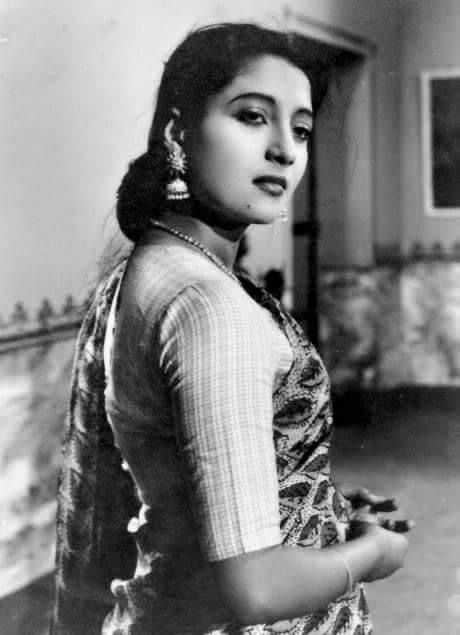
Image source: Pinterest
When Was the First Blouse Made?
As per the Pali and Sanskrit texts of the 6th century B.C, a three-piece ensemble was the precursor to the modern blouse. This three-piece ensemble consisted of the lower garment (Antriya), a veil over the head or shoulder (Uttariya), and a chest band (Stanapatta).
The arrival of the Mughals in the 15th century led to a division among garments. It was during this time that a garment like the salwar became an important part of ladies clothing. It gave rise to the tradition of salwar kameez. Many Rajput and Kangra paintings from this period show women wearing cholis or stitched blouses with ghagras or wide skirts. When the British arrived, Indians were exposed to Victorian standards of morality and propriety.
Many opportunities for socializing came up for middle and upper-class Indian women. It slowly led to a conflict between the notion of what is a proper dress code for women.
Where Was Blouse Originated in India?
As per the legend, Rabindra Nath Tagore's sister-in-law, Gyananadini devi popularized the form of blouse we know today. During her time, it was important for women to drape a saree that provided sufficient covering, thus negating the need for a blouse.
But Gyananadini devi was barred from entering an English club because of wearing indecent attire. The lady was quite angered with the episode and transformed the traditional Bengali saree into a modern outfit. In her view, a saree was complete only when the wearer wore a blouse with it. From then on, women all over India started wearing a blouse with their sarees.
After independence, one could observe massive style variations in the blouse in terms of woven fabric, embroidery, neckline, and differing sleeve and blouse length.
Many women curiously ask "when were blouse popular?"
They started becoming popular at the start of the 20th century. By that time, there was an introduction of a variety of blouse styles, like sleeveless blouses, loose-styled blouses, and those with short puff sleeves. A number of styles, from modest necklines to bold halter necks, sleeveless, noodle straps, and full sleeves in fabrics like georgette, brocade, lace, and velvet, became available for modern Indian women.
-compressed.jpg)
Image source: Pinterest
What Are the Major Blouse Designs in Vogue Today
A simple white blouse is an essential part of every women's wardrobe today. At the same time, one can get baffled at the innumerable designs and types of this garment in the market. Here are some of the significant blouse types that women usually wear in India.
1. Backless Blouse
It consists of a deep cut-out at the back and usually features a dori. The blouse also has a fuller neckline at its front.
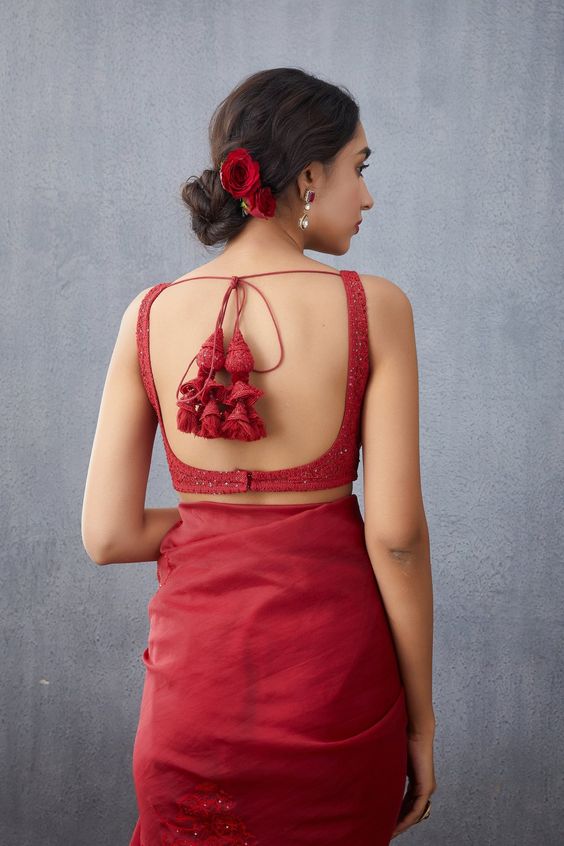
Image source: Pinterest
2. Halter Neck Blouse
Its a style that runs from the front of your garment around the back of the neck. This blouse leaves the upper back uncovered.

Image source: Pinterest
3. Boatneck Blouse
A boatneck or Sabrina neckline is a broad neckline that extends horizontally front and back across your collar bone. These blouses also support substantial embroidery.

Image source: Pinterest
4. High-Neck Blouse
This style mainly refers to a high back that is without or with a cutout. They accentuate the neckline.

Image source: Pinterest
5. Collared Neck Blouse
As the name suggests, the blouse has collars that highlights the neckline. You can find it in half or 3/4 sleeves.

image of collared neck blouse
6. Knot Blouse
They feature knots either on the front or back. The knots make the blouse highly stylish.
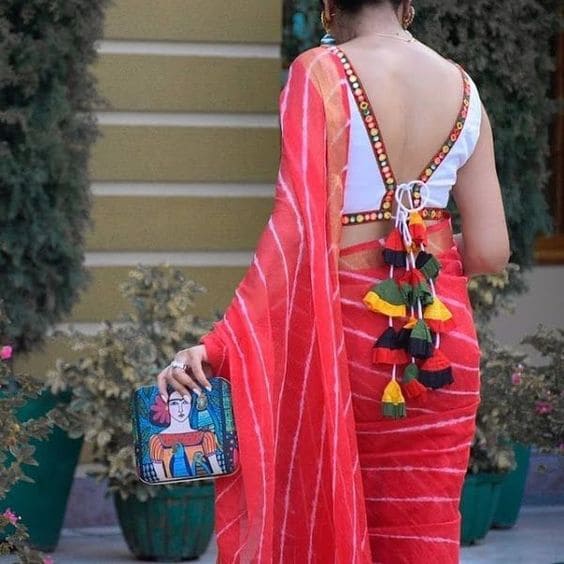
Image source: Pinterest
7. Asymmetrical Blouse
Asymmetrical types of blouse are those in which both the sides look dissimilar. It is an offshoot of Japanese fashion.
.jpg)
Image source: Pinterest
8. Off-shoulder Blouse
This blouse style accentuates shoulders and necklines. Detailed sleeves are a defining trait of these tops.
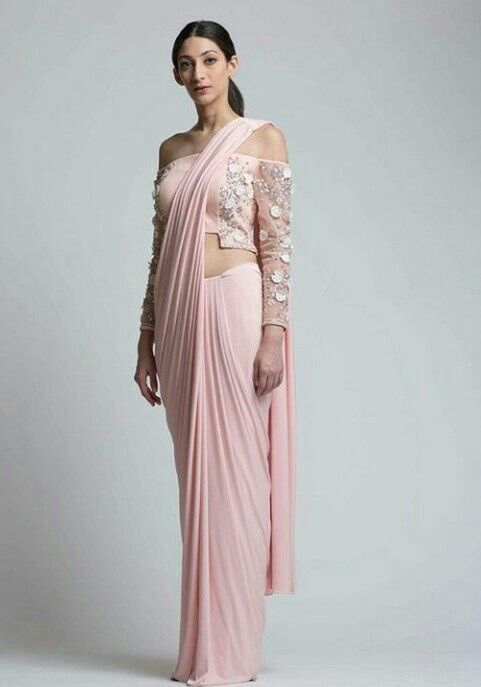
Image source: Pinterest
Blouse Vs. Shirt - What's the Difference?
People often use the terms blouse and shirt interchangeably. Both the garments are similar to each other, but not the same. So, what is similar to blouse?
Well, a short shirt is similar to it, but there is still a significant difference between the two. The blouse is more full at the waist. In contrast, the shirt can be of any style, as long as it provides coverage to your upper body. The blouse is a top that doesn't have full button closures. But a shirt can have any kind of closure.
Apart from this major difference, you will never find the word 'blouse' pointing towards men's clothing. On the other hand, the shirt refers to both men and women's clothing. A blouse also has a range of collar styles. These styles are an outcome of the history of women's fashion. But a shirt doesn't have many collar styles.
Final Words
Blouse origination and relevance is an interesting field to explore. Over the years, many factors have changed Indian fashion and the saree blouse tastes of women. These factors mainly include political changes, attitude and lifestyle changes, the influence of Bollywood fashion, and western influence. Given the rapid transformation of blouses over recent years, one can only anticipate, with much eagerness, the various new trends that will emerge.





